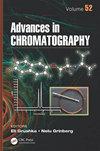色谱分离与核磁共振:药物开发的综合方法。
摘要
在过去的10年里,LC-NMR的性能有了很大的提高。柱后SPE的加入,探针技术的进步,包括低温探针和微线圈探针,改进的溶剂抑制脉冲序列,以及具有更好均匀性的屏蔽磁体,都促进了该技术的快速发展。LC-NMR在药物开发问题中的应用对结构解析研究产生了重大影响。LC-NMR已成功应用于确定降解产物、杂质、化合物混合物和代谢物的结构。在LC-NMR实验中使用止流技术已经成为鉴定不稳定化合物和研究构象动力学的关键手段。SPE作为LC单元和NMR光谱仪之间的中间步骤的集成极大地提高了连接技术在痕量分析应用中的能力。通过SPE对色谱峰进行在线柱后富集,允许在同一或不同的色谱盒上重复注射,从而大大减少了核磁共振采集时间。由于质子化溶剂可以很容易地通过干燥过程去除,溶剂和缓冲液可以自由选择,以最大限度地提高色谱分离而不影响核磁共振光谱质量。然后可以使用氘化有机溶剂将感兴趣的化合物从SPE墨盒中洗脱出来,这有助于减少动态范围问题。当与低温冷却的微毛细管探针结合使用时,核磁共振信号的灵敏度比传统的室温探针提高了约10倍,能够在微克水平上进行完整的结构表征。以前只有在少数情况下才可能进行浓度的异核实验,现在已成为标准实验。HSQC和HMBC实验的可用性以及微线圈/低温技术打开了使用LC-(SPE) NMR在微克尺度上对完全未知的结构进行解析的可能性。为了在现有能力的基础上实现未来的显著缩小,需要解决LC-NMR界面性能的改进和SPE墨盒保留的改进。此外,为了不损失填充因子,核磁共振液池或毛细管的有效体积必须随着相应的检测线圈而缩小。随着核磁共振探针的尺寸在质量敏感性方面变得更加有效,CE或毛细管电色谱(CEC)等技术可能更成功地与核磁共振波谱相结合。总的来说,目前LC-NMR的最新技术已经在各种应用中得到了证明。当与SPE和冷冻技术相结合时,LC-NMR已成为质量有限样品的极有价值的工具,无需费力的连续分离和纯化程序即可进行结构解析。Over the past 10 years, major improvements in the performance of LC-NMR have been realized. The addition of postcolumn SPE, advances in probe technology including cryogenic probes and microcoil probes, improved solvent suppression pulse sequences, and shielded magnets with better homogeneity have all contributed to rapid advancements in this technology. Application of LC-NMR to problems in pharmaceutical development has had a major impact on structure elucidation studies. LC-NMR has been successfully applied to determine the structures of degradation products, impurities, mixtures of compounds, and metabolites. Use of stop flow techniques with LC-NMR experiments has been a critical means of identifying unstable compounds and studying conformational kinetics. The integration of SPE as an intermediate step between the LC unit and the NMR spectrometer has vastly improved the power of the hyphenated technique in trace analysis applications. Online postcolumn enrichment of chromatographic peaks by SPE dramatically reduces the NMR acquisition times by allowing repeated injections to be trapped onto the same cartridge or different cartridges. Because protonated solvents can be easily removed with a drying procedure, solvents and buffers may be freely chosen for maximizing chromatographic separation without compromising NMR spectral quality. The compound of interest may then be eluted from an SPE cartridge using deuterated organic solvent, which helps to reduce dynamic range issues. When combined with cryogenically cooled microcapillary probes, the sensitivity of the NMR signal increases about 10-fold over conventional room temperature probes, enabling full structure characterization at the microgram level. Heteronuclear experiments with concentrations previously only possible in a limited number of cases have now become standard experiments. The availability of HSQC and HMBC experiments and microcoil/cryogenic technology opens the possibility of using LC-(SPE) NMR for the structural elucidation of complete unknowns on a microgram scale. To enable significant future downscaling beyond the current capabilities, improved performance of the LC-NMR interface and improved SPE cartridge retention need to be addressed. In addition, the active volume of the NMR flow cell or capillary tube will have to shrink along with the corresponding detection coils in order not to lose filling factor. As the size of the NMR probes become more efficient with respect to mass sensitivity, techniques such as CE or capillary electrochromatography (CEC) may be interfaced more successfully with NMR spectroscopy. Overall, the current state of the art in LC-NMR has demonstrated proven utility in a variety of applications. When combined with SPE and cryotechnology, LC-NMR has become an extremely valuable tool for mass limited samples, enabling structure elucidation without the need for laborious serial isolation and purification procedures.

 求助内容:
求助内容: 应助结果提醒方式:
应助结果提醒方式:


